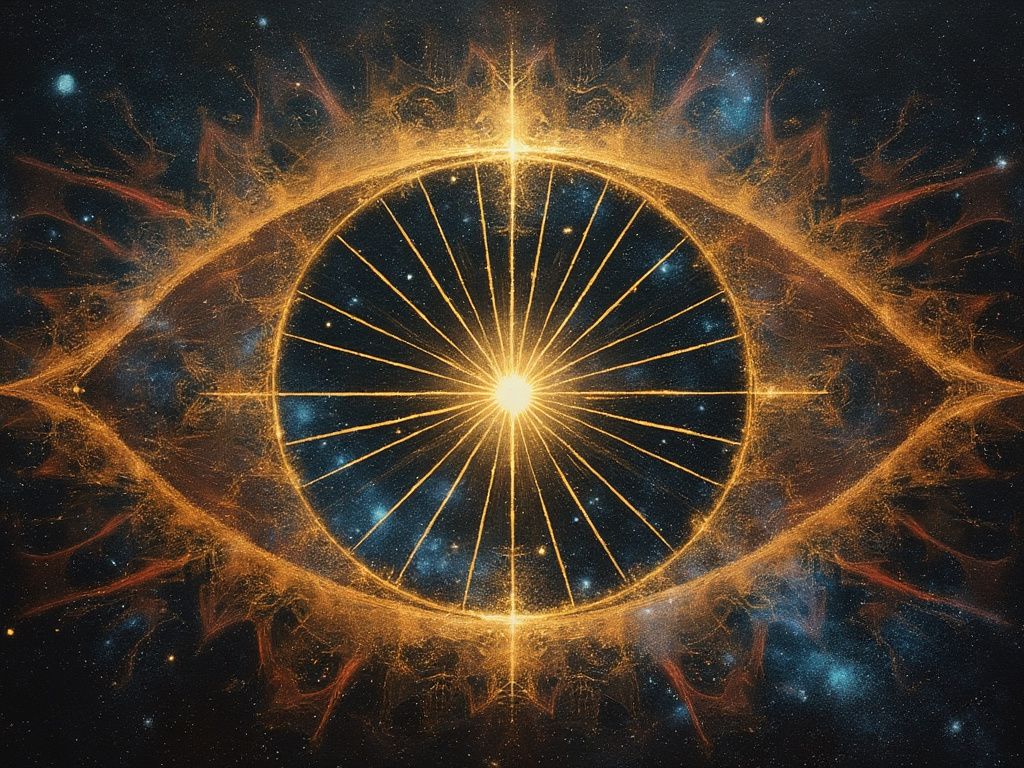| Malta Short Let: Cozy Stay in Gzira | |
|
Sliema Area Modern Designer Finished 2 Bedrooms + Games Room. First floor with Maltese Balcony Large back Terrace with swinging sofa Fully Airconditioned + Full Kitchen 3 TVs, including 65” with backlight. |
 |
|
Book Now: Google Travel | Direct (Cheapest) | Booking.com | Airbnb |
|
Hidden among the craggy limestone landscapes of Malta lie some of the most enigmatic and awe-inspiring megalithic temples in the world. These structures, built more than 5,000 years ago, predate even the famous pyramids of Egypt and Stonehenge, standing as silent witnesses to an ancient civilization that thrived on this tiny Mediterranean archipelago. Yet, despite centuries of research and excavations, the mystery of these temples remains far from solved. What were these monuments truly for, and what happened to the people who built them? How did such an isolated island community develop one of the most advanced Neolithic civilizations in Europe?
Exploring Malta’s Ancient Wonders
Visiting Malta offers a unique opportunity to delve into these ancient mysteries firsthand. As you plan your journey to uncover the secrets of the Maltese temples, consider how the ancients managed their accommodations when they were away from home. While they might have rested under starlit skies, you can enjoy modern comforts infused with local charm.
Here are our two recommended short stays in Sliema:
- Sliema: A one-bedroom apartment with a traditional Maltese balcony, comfortable sofa, three TVs, air conditioning, and internet access. It’s the perfect blend of comfort and authenticity. Book your Sliema rental apartment today.
- Gzira: A designer-finished two-bedroom apartment in a great location. Features include a 65″ TV, Maltese balcony, kitchen, back terrace, internal yard with a beautiful mural, comfortable sofa, and internet access. Book your Gzira rental apartment today.
Ancient Mastery of Stone: How Did They Build Them?
The temples of Malta, including Hagar Qim and Mnajdra, are massive, meticulously constructed limestone complexes. Their design features intricate carvings, spiral motifs, and doorways aligned with the solstices and equinoxes, hinting at deep knowledge of astronomy. These structures appear to have been not just temples but multifunctional hubs, combining elements of sacred spaces, astronomical observatories, and perhaps even places of communal gatherings for feasts and rituals.
But how did the ancient Maltese people achieve this feat? Some theories suggest that they developed an understanding of engineering and stonework far beyond what should have been possible for a Neolithic society. The colossal stones, some weighing more than 50 tons, were transported across the island and erected without the use of modern tools or machinery.
One theory posited by Francis Hitching in Earth Magic offers an intriguing perspective. He suggests that ancient people might have used a form of forgotten geomantic power, tapping into the natural energies of the earth. This knowledge, he argues, became so complicated that it collapsed under its own weight—too vast to be retained solely by human memory. Could the temple builders have possessed a kind of “earth magic,” a knowledge of natural forces that modern man can no longer comprehend? Is it possible that this knowledge, once lost, was so integral to their civilization that its disappearance led to their downfall?
It’s fascinating to consider that this lost knowledge might have involved more than just engineering and construction. Ancient geomancers and shamans may have possessed ways of sensing earth energies through some form of long-forgotten human sensitivity—perhaps what we now dismiss as “superstition” was once a practical application of these energies. The alignment of the temples with celestial bodies and the magnetic ley lines suggests that the builders were in tune with forces beyond mere physical construction. Could this have been part of a greater understanding, something that connected the people with both the earth and the cosmos in ways we can hardly fathom?
A Lost Civilization: Collapse by Complexity or External Force?
The sudden disappearance of the temple-building civilization is one of the great unsolved mysteries of the Maltese islands. By 2500 BCE, the construction of these grand monuments ceased, and there is little evidence to explain why. There are no signs of widespread war or famine in the archaeological record, and yet, the people seem to have abandoned their temples and left behind the bones of their ancestors in burial chambers like the Hypogeum of Ħal Saflieni.
Hitching’s theory about the collapse of a society due to over-complexity is compelling. He argues that their civilization might have grown too advanced for its own good, its intricate knowledge systems becoming too cumbersome to manage without written records. Oral tradition, the primary means of knowledge transmission at the time, could have faltered under the weight of accumulating secrets and rituals. In this scenario, the civilization might have collapsed under the burden of its own intellectual and spiritual advancements.
But could there be more to the story? Some researchers propose that external forces, such as invasion or ecological disaster, may have played a role in the sudden disappearance of the temple builders. However, there’s no conclusive evidence of warfare or environmental cataclysm. Could it be that the collapse was more insidious, involving cultural or ideological shifts brought about by external contact? Perhaps a group of invaders, less attuned to the spiritual and geomantic practices of the temple builders, imposed a materialistic worldview, prioritizing territorial control over harmony with nature.
Mystical Rituals and Sacred Spaces
The temples themselves offer tantalizing clues about the spiritual life of the ancient Maltese. Many of the temple interiors feature altars and spaces that could have been used for ritual offerings. Animal bones, sometimes charred, have been found at these sites, suggesting that sacrifice played a role in their religious practices. The Maltese temples may have been the centers of fertility cults, with rituals centered on ensuring the continuity of life, both human and agricultural.
Figurines like the “Sleeping Lady” and the “Venus of Malta” have led many scholars to believe that the temples were dedicated to a Mother Goddess—a symbol of fertility, life, and death. But even here, the interpretation is not straightforward. Some figurines found at sites like Tarxien depict not voluptuous female forms but androgynous or ambiguous figures, challenging the idea that the temples were solely devoted to a fertility goddess.
In recent years, other interpretations have emerged. Could the temples have been sites where death and the afterlife were as important as life and fertility? The Hypogeum, a vast underground necropolis, suggests that ancestor worship and complex burial rituals were central to the belief system of the temple builders. Was the purpose of these temples to create a bridge between the living and the dead, a portal through which souls could pass into the afterlife?
The spiral motifs found in many temples might symbolize the cyclical nature of life, death, and rebirth. Could the temples have functioned as more than places of worship—perhaps as spiritual machines designed to manipulate cosmic and earthly energies to maintain the balance between worlds?
A Civilization Obsessed with the Dead?
The archaeological evidence points to a civilization deeply concerned with death and burial. Thousands of human remains have been discovered in the Hypogeum, and there is evidence that the bones were periodically rearranged and ritually manipulated. Could this suggest an obsession with death that goes beyond simple ancestor worship? Some have speculated that the temple builders might have practiced forms of necromancy or communicated with the dead through elaborate rituals.
One particularly intriguing find is the presence of elaborate headdresses made of cowrie shells found with some of the bodies, suggesting that certain individuals—possibly shamans or priests—held special roles in these death rituals. The discovery of stylized figurines depicting seated couples or families among the dead raises more questions than it answers. Could these figures represent the deceased, or perhaps deities who presided over the afterlife? Could the temples have been places where the living sought to commune with their ancestors, to gain wisdom, protection, or guidance?
The Role of the Midwife or Sorceress?
One of the more unusual interpretations of the figurines found at the temples comes from recent studies that suggest they may have been linked to midwifery or sorcery. Some terracotta figurines, found with small clay “twists” interpreted as fetuses, appear to depict pregnant women. This has led to the theory that midwives or healers may have created these figures as part of fertility or childbirth rituals. Were these midwives also sorceresses, using sympathetic magic to protect mothers and unborn children?
The manipulation of these figurines—particularly those that were fired with bone and shell fragments inserted into their clay bodies—hints at a form of apotropaic magic, designed to ward off evil forces during pregnancy. Could it be that the role of women, particularly as healers and midwives, was far more central to the religious and spiritual life of the Maltese temples than we have previously understood?
A Civilization That Touched the Stars
Perhaps one of the most compelling mysteries of the Maltese temples is their astronomical alignment. Mnajdra, in particular, is perfectly aligned to track the movements of the sun during the solstices and equinoxes. These alignments suggest that the temple builders had a sophisticated understanding of the heavens, which they may have used to regulate their agricultural calendar or to time their rituals.
But could there be more to this cosmic connection? Some theorists have speculated that the temples were not just observatories but portals to other realms—places where humans could communicate with celestial beings or even travel between dimensions. The precise astronomical alignments, combined with the temple builders’ mastery of stone and earth energies, hint at a deeper knowledge of the cosmos. Were the temple builders attempting to bridge the gap between heaven and earth, using their temples as cosmic gateways?
What Happened to the Temple Builders?
Ultimately, the fate of the temple builders remains one of the great unsolved mysteries of prehistory. By 2500 BCE, the temples were abandoned, and the civilization that created them faded into obscurity. The islands were repopulated by Bronze Age people who had no connection to the temple builders, and their sophisticated knowledge was lost.
What caused the sudden collapse of this advanced society? Was it a slow decline brought on by environmental pressures, as some researchers suggest? Or was it the result of a cataclysmic event—an invasion, a shift in climate, or a spiritual crisis that led the people to abandon their sacred sites?
In the absence of definitive answers, we are left to wonder. The Maltese temples remain as enigmatic today as they were when they were first discovered, their silent stones offering only fragments of a long-lost story. What knowledge did these ancient people possess, and why did they lose it? Could the secrets of the Maltese temples one day be rediscovered, or are they destined to remain forever out of reach, tantalizing us with their mysteries?
As we stand before these ancient monuments, we are reminded that there is still so much we do not know about the past. Perhaps the answers lie not in the stones themselves but in the spaces between them—the gaps in our understanding that invite us to explore the possibilities, to question, and to imagine.
Discover Malta for Yourself
If you’re intrigued by the mysteries of Malta and wish to explore them firsthand, there’s no better time to plan your visit. While the ancients may have navigated the island’s rugged terrain on foot, you can traverse this historic landscape with ease from a comfortable base.
Consider staying in Sliema or Gzira to be close to both the ancient sites and modern amenities:
- Sliema: Immerse yourself in local culture with a stay in our one-bedroom apartment featuring a traditional Maltese balcony. Relax after a day of exploration on a comfortable sofa, and enjoy the convenience of three TVs, air conditioning, and internet access. Book your Sliema rental apartment today.
- Gzira: Experience the blend of modern design and historic charm in our two-bedroom apartment. With a 65″ TV, a Maltese balcony, a fully-equipped kitchen, and artistic touches like an internal yard with a mural, it’s the perfect retreat. Book your Gzira rental apartment today.
While you’re here, don’t miss out on other historical treasures:
- Explore the Ħal Saflieni Hypogeum, an underground necropolis shrouded in mystery.
- Uncover the secrets of the Gġantija Temples in Gozo, some of the oldest freestanding structures in the world.
- Delve into the intriguing connections between geology and megalithic structures in Geological Instability and the Maltese Megalithic Structures: Are They Connected?.
Conclusion: A Legacy Shrouded in Mystery
The ancient temples of Malta stand as silent witnesses to a bygone era of unimaginable ingenuity and spiritual depth. While we can marvel at the sheer architectural genius of these structures, their true purpose and the knowledge behind their creation remain elusive, tantalizingly out of reach. Were these temples merely centers of religious worship, observatories for celestial events, or gateways to a metaphysical world where the boundaries of life and death blurred? Perhaps they were all of these things, and more.
Modern archaeology has provided us with valuable insights into the daily lives and spiritual practices of the temple builders, but many questions linger. What knowledge did they possess that allowed them to build such complex structures without the wheel or advanced tools? What was the source of their apparent harmony with the land and the cosmos? Did they develop a more profound understanding of existence that we have lost over the millennia, or has this knowledge been deliberately suppressed by later civilizations more concerned with conquest than cosmic balance?
As we continue to excavate and interpret the stones of these temples, we are left with an unsettling realization: our scientific tools and methods may never fully uncover the depth of the wisdom that guided this ancient culture. In a world increasingly dominated by materialism and disconnection from nature, perhaps the true lesson of the Maltese temples lies in their enduring mystery. They challenge us to reconsider what we think we know about the past—and what we still have to learn about the world, our ancestors, and ourselves.
The temples of Malta stand as both a reminder and a riddle: that knowledge, once gained, can be lost—or even hidden—and that the key to unlocking these ancient truths may lie in realms beyond the reach of conventional inquiry. What remains is an invitation to wonder, to question, and to seek out the wisdom that has long been buried beneath the sands of time.
Further Exploration
For those eager to delve deeper into Malta’s ancient past, these articles offer fascinating insights:
- Unveiling Malta’s Neolithic Secrets: The Pottery That Connects an Ancient Civilization
- The Dolmens, Temples, and Cosmic Alignments of Malta: A New Perspective on an Ancient Civilization
- The Enigmatic Temples of Malta: Lost Knowledge and Ancient Power
- Hidden Wisdom of the Maltese Ancients: Lost or Intentionally Concealed?
- The Forgotten Temple Builders of Malta: Unraveling Europe’s Ancient Megalithic Civilization
Disclaimer
The content here is based on theories, interpretations, and speculation. Much of it involves educated guesses, thoughts, and some imagination about Malta’s Neolithic temples and culture. These are not proven facts and may change with new discoveries. These ideas are far from definitive or conclusive.








